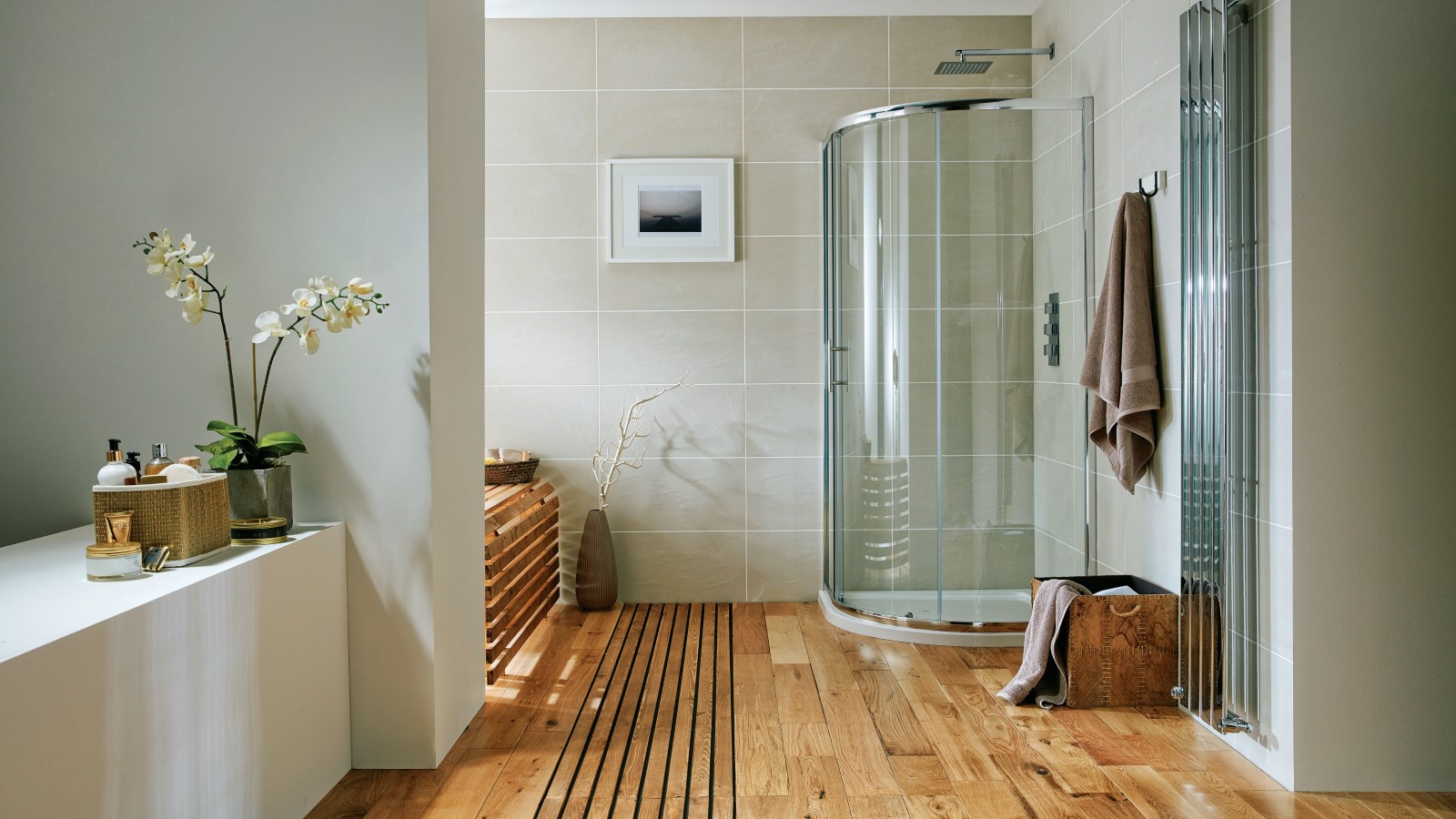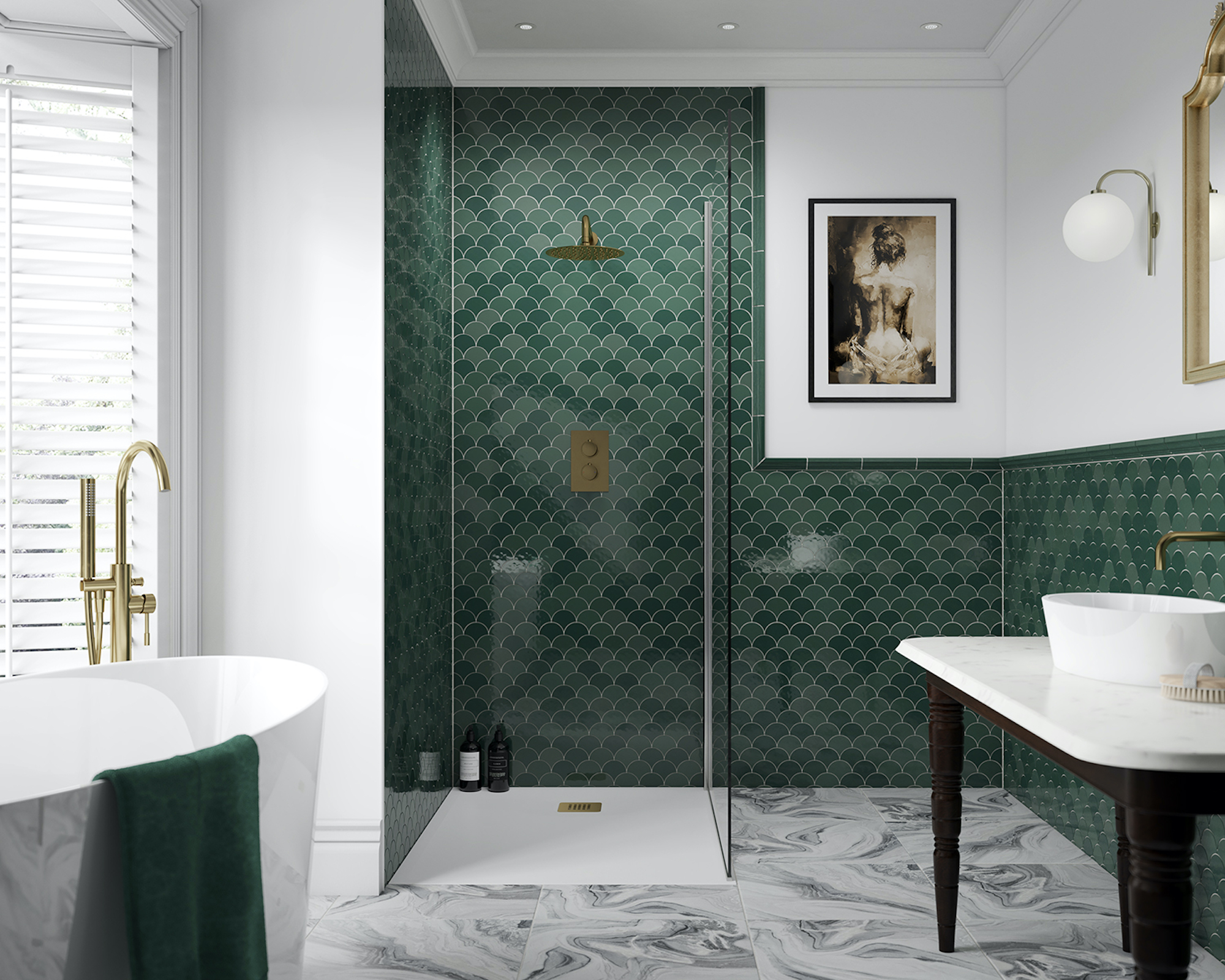Do I need underfloor heating in the bathroom?
Wondering if you should install underfloor heating in your bathroom? Weigh this expert advice before making your decision


As the cold season enters full swing, our daily experiences of our homes change. When you get out of bed in the morning, you’re tempted to reach for those fuzzy slippers and warmer gown. And when you step out of the shower in the morning, suddenly you’re really feeling those cold tiles under your feet in a way that’s no longer cooling and pleasant as it was in the summer.
Naturally, you might be asking yourself at this time of year, ‘Do I need underfloor heating in the bathroom?’ Maybe you’ve experienced the pleasant warmth underfoot while staying in a nice hotel, or maybe a friend or family member has this type of bathroom heating in their home.
However, as with any type of home improvement, bathroom underfloor heating comes with pros and cons. If you need help balancing the benefits with the cost and effort involved in installing this type of heating in your bathroom, read what heating and flooring experts have to say about it.
Do I need underfloor heating in the bathroom?
The simple answer is ‘no’. As Todd Saunders, CEO at FlooringStores, explains, underfloor heating is not ‘a necessity’ in your bathroom. Dominic Lees-Bell, heating expert at Only Radiators, adds that ‘most people will brave their frosty bathrooms just to save money.’ Indeed, from a purely financial perspective, it’s obviously cheaper not to have underfloor heating – or any type of heating, for that matter – in your bathroom.
Particularly if you’re moving into an older home that already has traditional bathroom radiators, you may choose not to install underfloor heating. It is expensive (anywhere between $10 and $40 per square foot) – Todd Saunders says that ‘you should expect to pay at least $600 for this project.’ And digging up the existing floor in a bathroom you weren’t planning to remodel can be more trouble than it’s worth, especially if the bathroom is large.
If, on the other hand, you’re planning a new bathroom or a complete bathroom remodel, or are self-building a home, it’s a completely different story. In these situations, not only is underfloor bathroom heating a good option, it may well be the best option. Here are some of the reasons:

Todd SAunders is the CEO of FlooringStores, a company that equips home improvement retailers with the tools required to succeed online and provide consumers a digital destination to make informed buying decisions

1. Underfloor heating is cheaper in the long run
Dominic Lees Bell explains that ‘while the cost of installing underfloor heating can look quite steep in the short term, the long-term savings can be high, making it a solid bathroom investment.’ That’s because underfloor heating is ‘highly economical thanks to its large surface area; you won’t need to reach temperatures as high as a radiator or towel rail as the heated bathroom floor warms up and keeps the room at optimum temperature.’
Design expertise in your inbox – from inspiring decorating ideas and beautiful celebrity homes to practical gardening advice and shopping round-ups.
Also, underfloor heating is more efficient at heating your bathroom because there are no ‘protruding objects’ in the way of the heat, as is often the case with radiators and heated towel racks. Between radiators that are blocked by bathroom furniture and underfloor heating, underfloor heating wins the efficiency battle hands down.
2. Underfloor heating is healthful and enhances comfort

This is pretty straightforward: stepping out onto a warm floor is just that much more pleasant than onto a freezing-cold one. ‘With underfloor heating, you can step out of your warm shower onto a warm floor and enjoy a much more pleasant start to the day,’ Dominic points out.
But it’s not just about the immediate comfort of stepping onto a warm floor. A warm bathroom is a healthier environment, unlike a cold bathroom that will, if left cold and damp over long periods of time, will almost certainly grow mold. Leaving your bathroom to freeze over is a big no-no, according to Dominic, who warns that ‘a cold bathroom will lead to dampness and the potential for menacing growth on your walls.’
Todd Saunders adds that a bathroom with underfloor heating can be safer to use, because this type of flooring ‘can help dry your bathroom floors more efficiently, reducing the risks of slips and falls.’ Wet rooms and all-tile bathrooms especially benefit from this feature, as they will have wet and slippery floors all the time otherwise.

Dominic Lees Bell is a bathroom and heating expert. He has a family background in the bathroom industry which has allowed him to build up a raft of knowledge over the years. He has a particular interest in bathroom design and commenting on heating trends. He has represented Only Radiators as a Bathroom and Heating Consultant for more than 8 years.
3. It may even add value to your home

Regardless of whether underfloor heating in a bathroom is a necessity, it is an increasingly coveted bathroom flooring option that is ‘gaining popularity, especially in new and self-build homes’, according to Dominic Lees Bell. If you are planning to sell your home in the future, it can ‘modestly increase your home's value’, according to Todd Saunders. Bathroom underfloor heating is perceived as luxurious and desirable and is perceived as a nice bonus by home buyers.
Of course, you have to be realistic here. Underfloor heating will increase the value of your home if done as part of a complete bathroom remodel, or as part of a bathroom installation in a new home. If you’re thinking of retrofitting bathroom underfloor heating with the sole aim of reselling, it may not be worth it.
FAQs
Can underfloor bathroom heating replace radiators?
Absolutely, it can. However, Dominic Lees Bell advises homeowners to be aware of their individual situation. He points out that he knows of many stories when bathroom underfloor heating is not working properly, ‘ and most often, this is not the fault of the system itself. Select underfloor heating for an ancient and vaulted mansion with seven storeys, for example, and you are probably not going to sense a spike in efficiency.’ ‘t's all about understanding what type of system will be best for you and your home’, reiterates Dominic.
The most popular solution for ‘most average-sized houses’ is underflooring bathroom heating and an electric heated towel rail. In ‘smaller or awkward-shaped rooms’, a heated towel rail on its own may well be enough ‘ as they fit nice and neat on walls.’
How do you install underfloor heating in your bathroom?
There are two ways you can get underfloor heating in your bathroom.
The first and most common method involves fitting underfloor central heating pipes. ‘If you already have a central heating system around your home, this might be the better route’, says Dominic. ‘The process is pretty straightforward. Pipes are fitted below the bathroom floor and linked to the rest of your central heating network.’
The other method involves using electric underfloor heating. Electric underfloor heating is ‘far easier to install and is the most cost-effective way to bring warmth to your feet.’ Electric underfloor heating consists of either heat mats or heat cables, with heat mats being ‘the simplest electric solution as they are a little easier to lay out.’
Electric underfloor heating can be easily hooked up to an underfloor heating thermostat ‘which allows you to easily monitor and adjust the heat settings. You can even get a WiFi-enabled thermostat that you can control using your phone on the move.’
Whichever option you choose, be mindful of the specifics of your own bathroom. The rule of thumb both our experts agree on is: if retrofitting underfloor heating seems overcomplicated, it probably is and you don’t need it. But if you are embarking on a total bathroom remodeling project or are building a brand-new home, go for it: it’s worth the investment.

Anna is a professional writer and academic. She taught English Literature for several years before joining Future where she wrote for Real Homes, Homes & Gardens and Livingetc for four years. She is a regular contributor for Parade Home, BiggerPockets, and many other publications. In her spare time, Anna enjoys hiking and gardening.